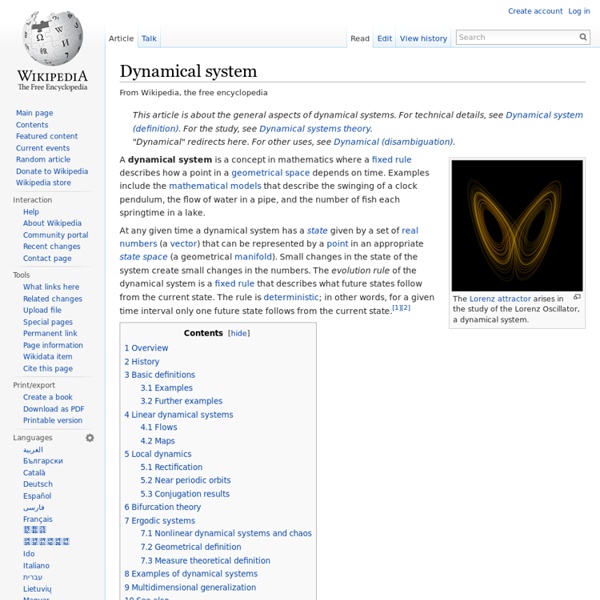Dynamical system

Combinatorics and dynamical systems
The mathematical disciplines of combinatorics and dynamical systems interact in a number of ways. The ergodic theory of dynamical systems has recently been used to prove combinatorial theorems about number theory which has given rise to the field of arithmetic combinatorics. Also dynamical systems theory is heavily involved in the relatively recent field of combinatorics on words. Also combinatorial aspects of dynamical systems are studied. Dynamical systems can be defined on combinatorial objects; see for example graph dynamical system. See also[edit] References[edit] External links[edit]
Category:Dynamical systems
From Wikipedia, the free encyclopedia Systems science portal Dynamical systems deals with the study of the solutions to the equations of motion of systems, not necessarily mechanical in nature; this includes both planetary orbits as well as the behaviour of electronic circuits and the solutions to partial differential equations that arise in biology. Much of modern research is focused on the study of chaotic systems. Subcategories This category has the following 28 subcategories, out of 28 total. Pages in category "Dynamical systems" The following 200 pages are in this category, out of approximately 270 total. (previous page) (next page)(previous page) (next page)
Related:
Related:



